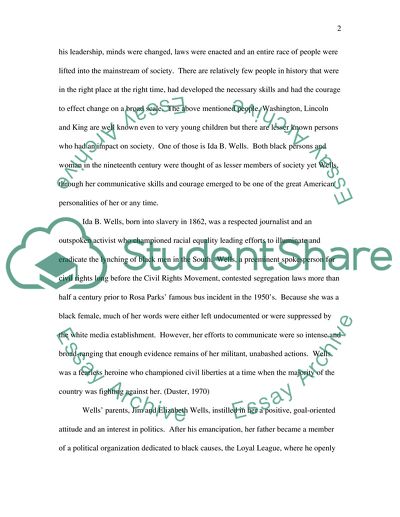Cite this document
(The Anti-Lynching Crusade of Ida B. Wells Term Paper, n.d.)
The Anti-Lynching Crusade of Ida B. Wells Term Paper. Retrieved from https://studentshare.org/history/1722636-the-anti-lynching-crusade-of-ida-b-wells
The Anti-Lynching Crusade of Ida B. Wells Term Paper. Retrieved from https://studentshare.org/history/1722636-the-anti-lynching-crusade-of-ida-b-wells
(The Anti-Lynching Crusade of Ida B. Wells Term Paper)
The Anti-Lynching Crusade of Ida B. Wells Term Paper. https://studentshare.org/history/1722636-the-anti-lynching-crusade-of-ida-b-wells.
The Anti-Lynching Crusade of Ida B. Wells Term Paper. https://studentshare.org/history/1722636-the-anti-lynching-crusade-of-ida-b-wells.
“The Anti-Lynching Crusade of Ida B. Wells Term Paper”, n.d. https://studentshare.org/history/1722636-the-anti-lynching-crusade-of-ida-b-wells.


